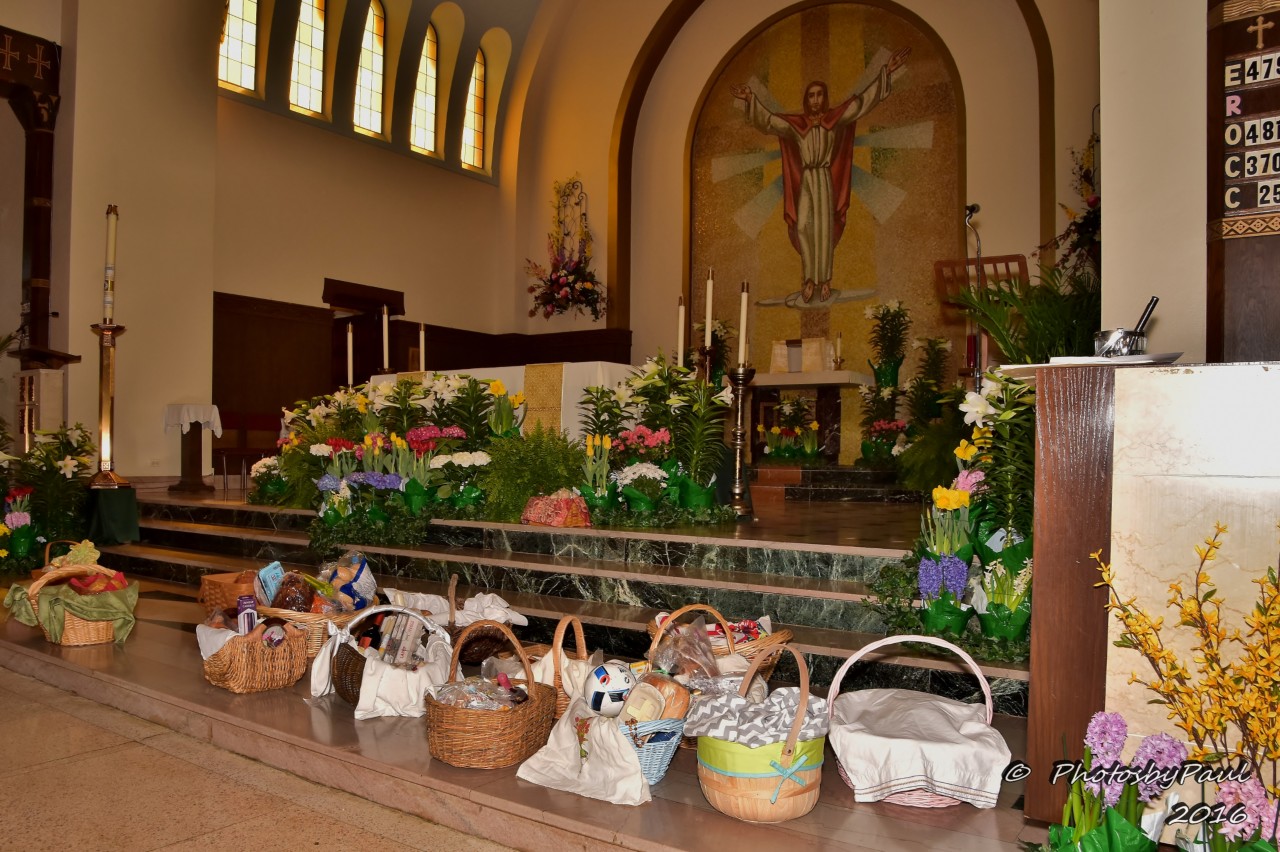Blessing of Food
For years it has been a practice in many Catholic families to bring a basket of food, prepared for the Easter meal, to church for a special blessing on Holy Saturday. This is an annual practice for our Saint Clement/Saint James communities with a Blessing of Food at 12 noon
This deeply rooted tradition is rich with symbolism for Easter, Spring, the Resurrection and many other reminders of our faith. This blessing has been a cherished Catholic ritual for centuries among families of Eastern European origin and adopted by people of all ethnic backgrounds who enjoy this richly symbolic custom. On Holy Saturday, families would prepare their Easter Baskets to be later blessed at church. After Easter Sunday’s Resurrection Mass, the family and guests would share this blessed fare and exchange good wishes.
The Christian significance of Easter is symbolized in the foods used for the Holiday feast. Baskets are lined with a white cloth and decorated with ribbons and greenery to symbolize Spring, renewal, and the Resurrection.
Traditionally, the baskets would include: decorated hard boiled eggs (representing Christ’s Resurrection), lamb shaped butter or sugar (representing Christ as the “Lamb of God“), bread (symbolic of Jesus as the “Bread of Life“), ham (symbolic of great joy and abundance), sausage (symbolic of God’s favor and generosity), smoked bacon (symbolic of the overabundance of God’s mercy), some prefer lamb (representing Christ as the “Lamb of God”), salt (symbolic of prosperity and justice and to remind us “You are the salt of the earth”), cheese (symbolizes the moderation Christians should have at all times), horseradish & pepper (symbolic of the Passion of Christ and the bitter herbs of the Passover). A white candle is often inserted into the basket to represent Christ as the “Light of the World.” Lastly, the basket is covered with linen symbolizing the covering of Christ’s shroud.


